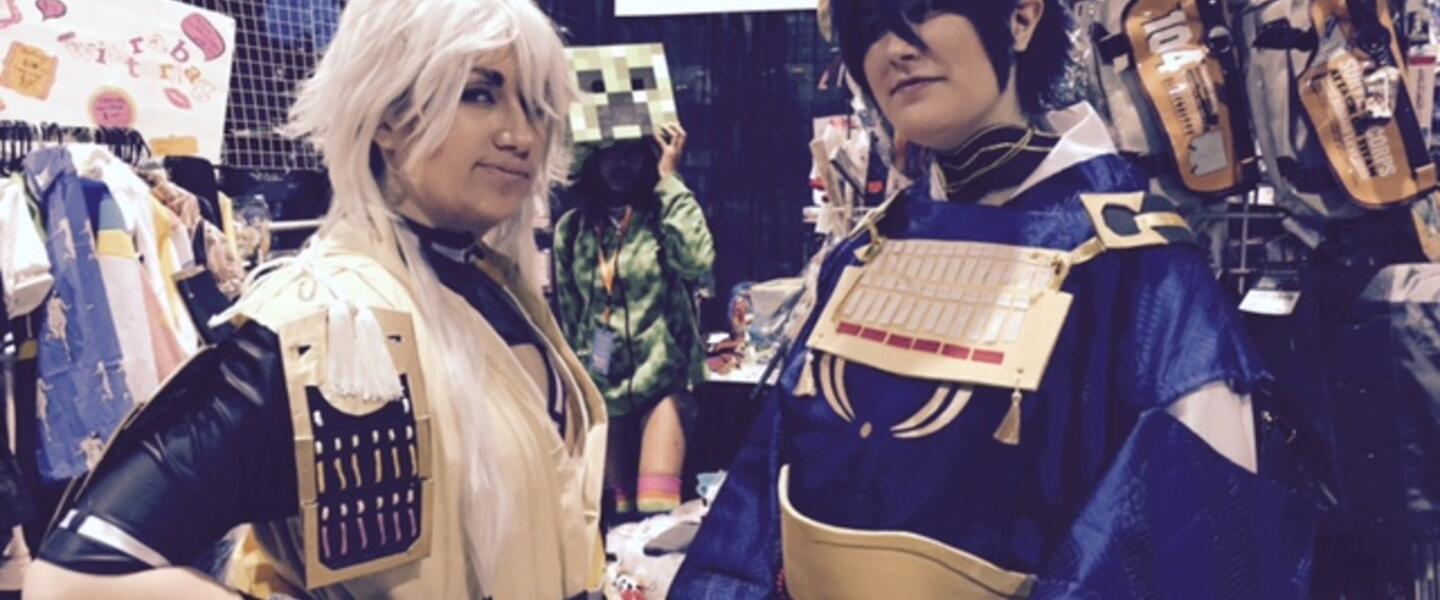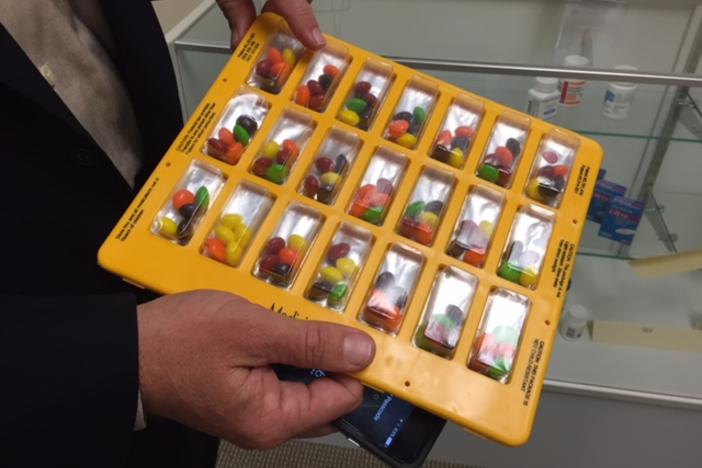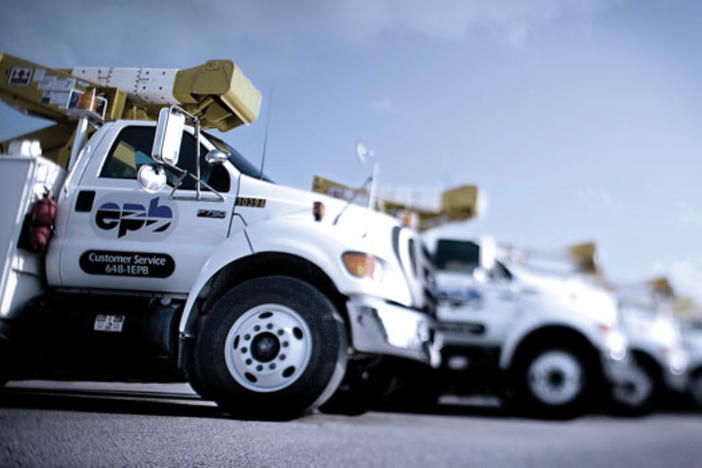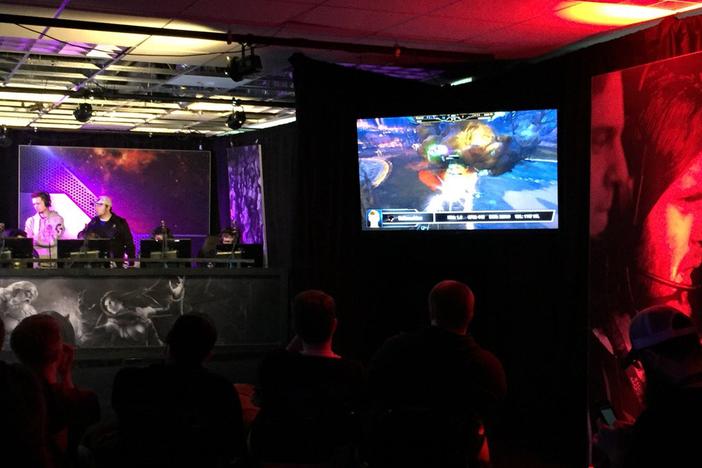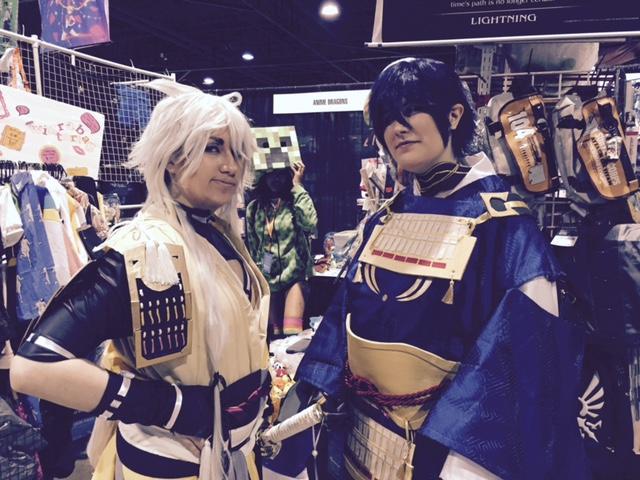
Section Branding
Header Content
MomoCon 2015: 27 Years After 'Akira,' Anime Thrives In Atlanta
Primary Content

Like most geek culture conventions, this weekend's MomoCon 2015 at the Georgia World Congress Center was a cosplayer's paradise. Hordes of young people came dressed as their favorite anime or gaming characters, and they worked hard to look like they had just stepped out of a League of Legends game, or a more-colorful-than-usual episode of Naruto Shippunden.
As I watched what seemed to be mostly teenage/college age women sporting fluorescent hair and elaborate costumes while posing for pictures at MomoCon, I wondered what it was about Japanese animation that drew their interest. This particular convention has grown rapidly since it started in 2004 as a Georgia Tech-based anime festival. MomoCon officials said this year's event drew 23,200 people, a 59 percent increase over 2014. Heather Kirksey, public relations manager with the Atlanta Convention and Visitors Bureau, said her organization had predicted $12.5 million in MomoCon economic impact, but that would have to be adjusted upward since it was based on an estimated attendance of 15,000.
Those figures insure that MomoCon, which this year expanded to include comic books, remains one of the top anime-centric conventions in the U.S. How did it get that way? Why are there so many Atlanta anime fans who not only spend the time and money to dress like Sailor Moon, but also spend the time and money to acquire anime manga and videos?
SciTech Now Georgia interviewed a handful of local cosplayers in December for a MomoCon event in Centennial Park, and we quizzed them on why they liked to dress as these characters. For many, it was a chance to escape day-to-day drudgery - to be the star of their own personal anime for a few hours while showing off their creativity to other like-minded fans.
It's a safe bet most of the attendees I saw dressed in their anime best weren't even born when "Akira" exploded on U.S. movie screens in 1988. Before then, my previous anime experiences had been pretty basic: "Speed Racer" and "Astroboy" reruns on Saturday morning TV. "Akira," however, broke the mold with its adult-oriented themes, bold animation and post-apocalyptic settings. It introduced a new generation of U.S. geek culture enthusiasts, including yours truly, to what was then considered to be modern anime. The next thing I knew, I was chasing down VHS tapes of "The Castle of Cagliostro" and "Mobile Suit Gundam." I also started to pay attention to what was coming out of Studio Ghibli, where Japan's Walt Disney, Hayao Miyazaki, would go on to make the Oscar-winning "Spirited Away."
"'Akira' showed Western audiences what Japan had been doing for a few years, with big action, big production," said Marc Smazik of SeishunCon, which bills itself as "Atlanta's Winter Anime Convention." "It was two steps beyond what we had seen in our cartoons. We were still watching Looney Tunes and old Hanna-Barbera cartoons."
Smazik and SeishunCon co-chairman Taylor Hall were working their booth at MomoCon, handing out flyers and trying to keep up with an international anime market that can churn out 20-30 new series every season. "Even for Marc and I, we'll be looking around the show and say, wow, there's a lot of stuff I don't recognize," Hall said with a laugh. "It's hard to keep up with it all."
That breadth and depth of anime content, along with the quality of the storytelling, is probably what attracts young U.S. audiences these days, he added. "They can sympathize with how a character feels, what they're going through, and they feel a connection or bond that they basically live out by dressing up as them."
So why does Atlanta seems to have more than its share of anime fans? "I think we have some of it to owe to DragonCon, just because they have a giant sci-fi/fantasy pull, so people just naturally congregate to this area, kind of like nerd culture," Hall said. Also, if you were already into comic book culture, you had a head start. "Especially in the '80s, comics were real big over here, so I think a lot of the comic crowd gravitated over because it was a natural extension of that type of characterization," Smazik said.
No more looking for bootleg VHS tapes or finding pen pals in Tokyo; the Internet has narrowed the search for anime fans. Crunchyroll.com now has a streaming service for subtitled anime that's more or less in sync with their Japanese release dates. In the meantime, Hall and Smazik recommend "Cowboy Bebop," "Neon Genesis Evangelion" and "The Melancholy of Haruhi Suzumiya" as good introductions to anime culture - and as homework for MomoCon 2016.
